Risk Assessment of Fracturing Induced Earthquake in the Qiabuqia Geothermal Field, China
Abstract
1. Introduction
2. Overview of Qiabuqia Geothermal Field
3. Focal Mechanism Analysis
4. Analysis of In-Situ Stress Field
4.1. Determination of In-Situ Stress Direction
4.1.1. Determination of In-Situ Stress Direction Based on Joint Fracture Statistics
4.1.2. Determination of In-Situ Stress Direction Based on Structural Analysis of Small Faults
4.1.3. Determination of In-Situ Stress Based on Focal Mechanism Solution
4.1.4. Comprehensive Analysis of In-Situ Stress Field Direction
4.2. Inversion of In-Situ Stress
4.2.1. Principle of Inversion Model
4.2.2. Inversion of In-Situ Stress
- (1)
- The load boundary conditions were applied to the two sides of X-axis and Y-axis to simulate the horizontal tectonic forces. With the increase of depth, the ratio of uniform load in X-axis to Y-axis changes from tan 49.82° to tan 54.39°. In the process of simulation, the ratio should be adjusted to be consistent with the actual situation.
- (2)
- To simulate the gravity, we apply the gravity acceleration g in the Z-axis direction of the 3D geological model.
5. Induced Earthquake Risk Assessment Based on ANN
6. Conclusions
- Gonghe Basin is located in the important node area of the Central Orogenic belt where many blocks intersect and transform. Its seismicity is relatively frequent. There are 97 earthquakes with Ms ≥ 3.0 and 13 earthquakes with Ms ≥ 5.0 since the 1950s near the geothermal field, which are basically distributed along the main fault zones, and most of the focal mechanisms are dextral reverse faults.
- Comprehensive analysis of joint fracture statistics, structure analysis of small fault and focal mechanism solution, the orientation of maximum principal stress in the shallow layer is between NE 55° and 72°, and at the depth of more than 5 km, the direction of maximum principal stress is NE 37°.
- According to the field investigation and the software simulation inversion results, the principal stress values are increasing from shallow to deep, and the overall change is uniform. The maximum principal stress gradient is about 0.0234 MPa/m, reaching 82 MPa at 3500 m depth. The minimum principal stress gradient is about 0.0141 MPa/m, reaching 45 MPa at 3500 m depth. The intermediate principal stress gradient is about 0.02 MPa/m, reaching 70 MPa at 3500 m depth.
- The trained ANN model is used to predict and evaluate the earthquake induced by hydraulic fracturing in the Qiabuqia geothermal field. The results show that the magnitude increases with the increase of injection volume and with the decrease of the distance from the fault. The maximum magnitude is close to magnitude 3.
Author Contributions
Funding
Conflicts of Interest
References
- Sanyal, S.K.; Butler, S.J. An analysis of power generation prospects from enhanced geothermal system. In Proceedings of the World Geothermal Congress, Antalya, Turkey, 24–29 April 2005. [Google Scholar]
- Zeng, Y.C.; Wu, N.Y.; Su, Z. Numerical simulation of electricity generation potential from fractured granite reservoir through a single horizontal well at Yangbajing geothermal field. Energy 2014, 65, 472–487. [Google Scholar] [CrossRef]
- Stephens, J.C.; Jiusto, S. Assessing innovation in emerging energy technologies:socio-technical dynamics of carbon capture and storage (CCS) and enhanced geothermal systems (EGS) in the USA. Energy Policy 2010, 38, 2020–2031. [Google Scholar] [CrossRef]
- Genter, A.; Evans, K.; Cuenot, N.; Fritsch, D.; Sanjuan, B. Contribution of the exploration of deep crystalline fractured reservoir of soultz to the knowledge of enhanced geothermal systems (EGS). Comptes Rendus Geosci. 2010, 342, 502–516. [Google Scholar] [CrossRef]
- Majer, E.L.; Baria, R.; Stark, M.; Oates, S.; Bommer, J.; Smith, B.; Asanuma, H. Induced seismicity associated with Enhanced Geothermal Systems. Geothermics 2007, 36, 185–222. [Google Scholar] [CrossRef]
- Martínez-Garzón, P.; Bohnhoff, M.; Kwiatek, G.; Dresen, G. Stress tensor changes related to fluid injection at The Geysers geothermal field, California. Geophys. Res. Lett. 2013, 40, 2596–2601. [Google Scholar] [CrossRef]
- Boyd, O.S.; Dreger, D.S.; Gritto, R.; Garcia, J. Analysis of seismic moment tensors and in situ stress during Enhanced Geothermal System development at The Geysers geothermal field, California. Geophys. J. Int. 2018, 215, 1483–1500. [Google Scholar] [CrossRef]
- Baisch, S.; Weidler, R.; Voros, R.; Wyborn, D.; de Graaf, L. Induced seismicity during the stimulation of a geothermal HFR reservoir in the Cooper Basin, Australia. Bull. Seism. Soc. Am. 2006, 96, 2242–2256. [Google Scholar] [CrossRef]
- Kwiatek, G.; Bulut, F.; Bohnhoff, M.; Dresen, G. High-resolution analysis of seismicity induced at Berlín geothermal field, El Salvador. Geothermics 2014, 52, 98–111. [Google Scholar] [CrossRef]
- Baisch, S.; Vörös, R.; Rothert, E.; Stang, H.; Jung, R.; Schellschmidt, R. A numerical model for fluid injection induced seismicity at Soultz-sous-Forêts. Int. J. Rock Mech. Min. Sci. 2010, 47, 405–413. [Google Scholar] [CrossRef]
- Kraft, T.; Deichmann, N. High-precision relocation and focal mechanism of the injection-induced seismicity at the Basel Egs. Geothermics 2014, 52, 59–73. [Google Scholar] [CrossRef]
- Lei, Z.; Zhang, Y.; Yu, Z.; Hu, Z.; Li, L.; Zhang, S.; Fu, L.; Zhou, L.; Xie, Y. Exploratory research into the enhanced geothermal system power generation project: The Qiabuqia geothermal field, Northwest China. Renew. Energy 2019, 139, 52–70. [Google Scholar] [CrossRef]
- Lei, Z.; Zhang, Y.; Zhang, S.; Fu, L.; Hu, Z.; Yu, Z.; Li, L.; Zhou, J. Electricity generation from a three-horizontal-well enhanced geothermal system in the Qiabuqia geothermal field, China: Slickwater fracturing treatments for different reservoir scenarios. Renew. Energy 2020, 145, 65–83. [Google Scholar] [CrossRef]
- Pijush, S.; Dookie, K. Applicability of artificial intelligence to reservoir induced earthquakes. Acta Geophys. 2014, 62, 608–619. [Google Scholar]
- Esen, H.; Inalli, M.; Sengur, A.; Esen, M. Performance prediction of a groundcoupled heat pump system using artificial neural networks. Expert Syst. Appl. 2008, 35, 1940–1948. [Google Scholar] [CrossRef]
- Esen, H.; Inalli, M. Modelling of a vertical ground coupled heat pump system by using artificial neural networks. Expert Syst. Appl. 2009, 36, 10229–10238. [Google Scholar] [CrossRef]
- Gang, W.J.; Wang, J.B. Predictive ANN models of ground heat exchanger for the control. Appl. Energy 2013, 112, 1146–1153. [Google Scholar] [CrossRef]
- Zhou, L.; Zhang, Y.; Hu, Z.; Yu, Z.; Luo, Y.; Lei, Y.; Lei, H.; Lei, Z.; Ma, Y. Analysis of influencing factors of the production performance of an enhanced geothermal system (EGS) with numerical simulation and artificial neural network (ANN). Energy Build. 2019, 200, 31–46. [Google Scholar] [CrossRef]
- Zamani, A.; Sorbi, M.R.; Safavi, A.A. Application of neural network and ANFIS model for earthquake occurrence in Iran. Earth Sci. Inform. 2013, 6, 71–85. [Google Scholar] [CrossRef]
- Zhang, S.Q.; Yan, W.D.; Li, D.P.; Jia, X.; Zhang, S.; Li, S.; Mu, J.Q. Characteristics of geothermal geology of the Qiabuqia HDR in Gonghe basin, Qinghai Province. Geol. China 2018, 45, 1087–1102. [Google Scholar]
- Meng, Q. Analysis of heavy minerals in sediments of xining-guide Basin in northeastern margin of the Tibet plateau in Cenozoic era and its tectonic evolution. Acta Sedimentol. Sin. 2013, 31, 139–148. [Google Scholar]
- Zhang, C.; Gong, J.; Zou, X.; Dong, G.; Li, X.; Dong, Z. Estimates of soil movement in a study area in Gonghe Basin, north-east of Qinghai-Tibet Plateau. J. Arid Environ. 2003, 53, 285–295. [Google Scholar] [CrossRef]
- Kagan, Y.Y.; Jackson, D.D. Likelihood analysis of earthquake focal mechanism distributions. Geophys. J. Int. 2015, 201, 1409–1415. [Google Scholar] [CrossRef]
- Mukuhira, Y.; Fuse, K.; Naoi, M.; Fehler, M.C.; Moriya, H.; Ito, T.; Asanuma, H.; Häring, M.O. Hybrid focal mechanism determination: Constraining focal mechanisms of injection induced seismicity using in situ stress data. Geophys. J. Int. 2018, 215, 1427–1441. [Google Scholar] [CrossRef]
- Kuang, W.; Zoback, M.; Zhang, J. Estimating geomechanical parameters from microseismic plane focal mechanisms recorded during multistage hydraulic fracturing. Geophysics 2017, 82, KS1–KS11. [Google Scholar] [CrossRef]
- Li, H.; Yao, Z.X. Microseismic focal mechanism inversion in frequency domain based on general dislocation point model. Chin. J. Geophys. 2018, 61, 905–916. [Google Scholar] [CrossRef]
- Convertito, V.; Herrero, A. Influence of Focal Mechanism in Probabilistic Seismic Hazard Analysis. Bull. Seismol. Soc. Am. 2004, 94, 2124–2136. [Google Scholar] [CrossRef]
- Karatela, E.; Taheri, A.; Xu, C.; Stevenson, G. Study on effect of in-situ stress ratio and discontinuities orientation on borehole stability in heavily fractured rocks using discrete element method. J. Pet. Sci. Eng. 2016, 139, 94–103. [Google Scholar] [CrossRef]
- Sasaki, S.; Kaieda, H. Determination of stress state from focal mechanisms of microseismic events induced during hydraulic injection at the Hijiori hot dry rock site. Pure Appl. Geophys. 2002, 159, 489–516. [Google Scholar] [CrossRef]
- Boyle, K.; Zoback, M. The Stress State of the Northwest Geysers, California Geothermal Field, and Implications for Fault-Controlled Fluid Flow. Bull. Seismol. Soc. Am. 2014, 104, 2303–2312. [Google Scholar] [CrossRef]
- Arcaklioglu, E.; Erisen, A.; Yilmaz, R. Artificial neural network analysis of heat pumps using refrigerant mixtures. Energy Convers. Manag. 2004, 45, 1917–1929. [Google Scholar] [CrossRef]
- Kumar, R.; Aggarwal, R.K.; Sharma, J.D. Energy analysis of a building using artificial neural network: A review. Energy Build 2013, 65, 352–358. [Google Scholar] [CrossRef]
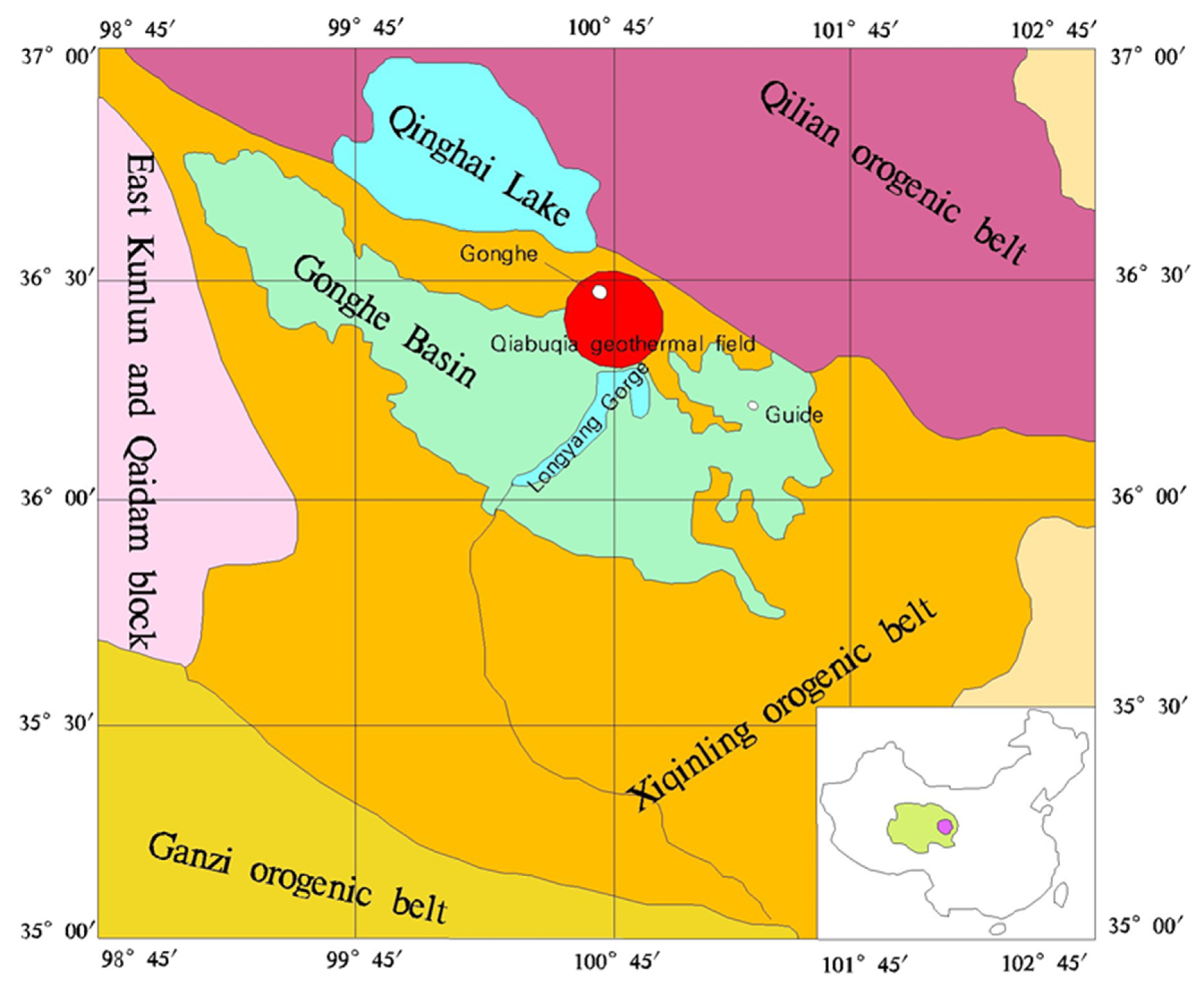

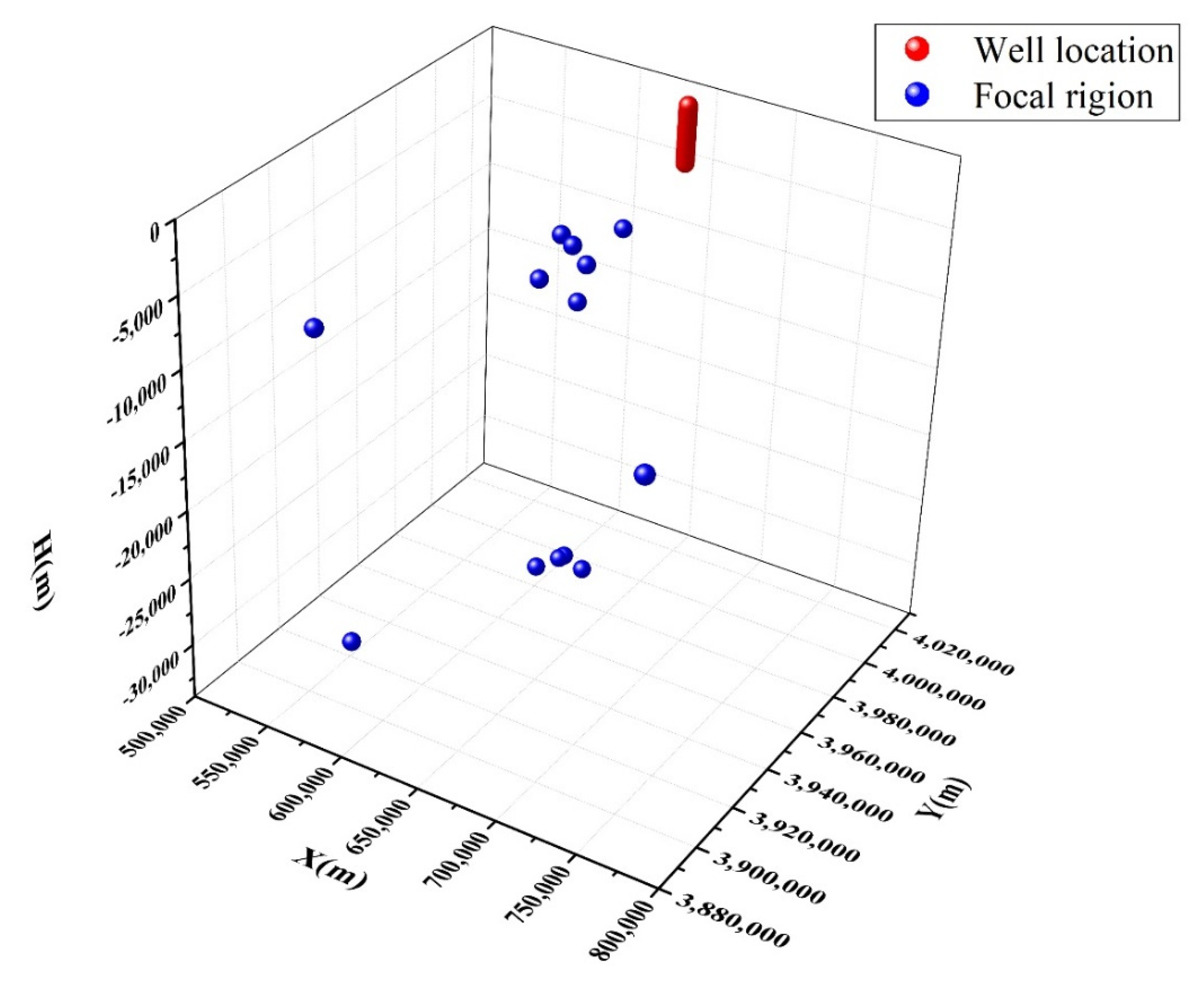




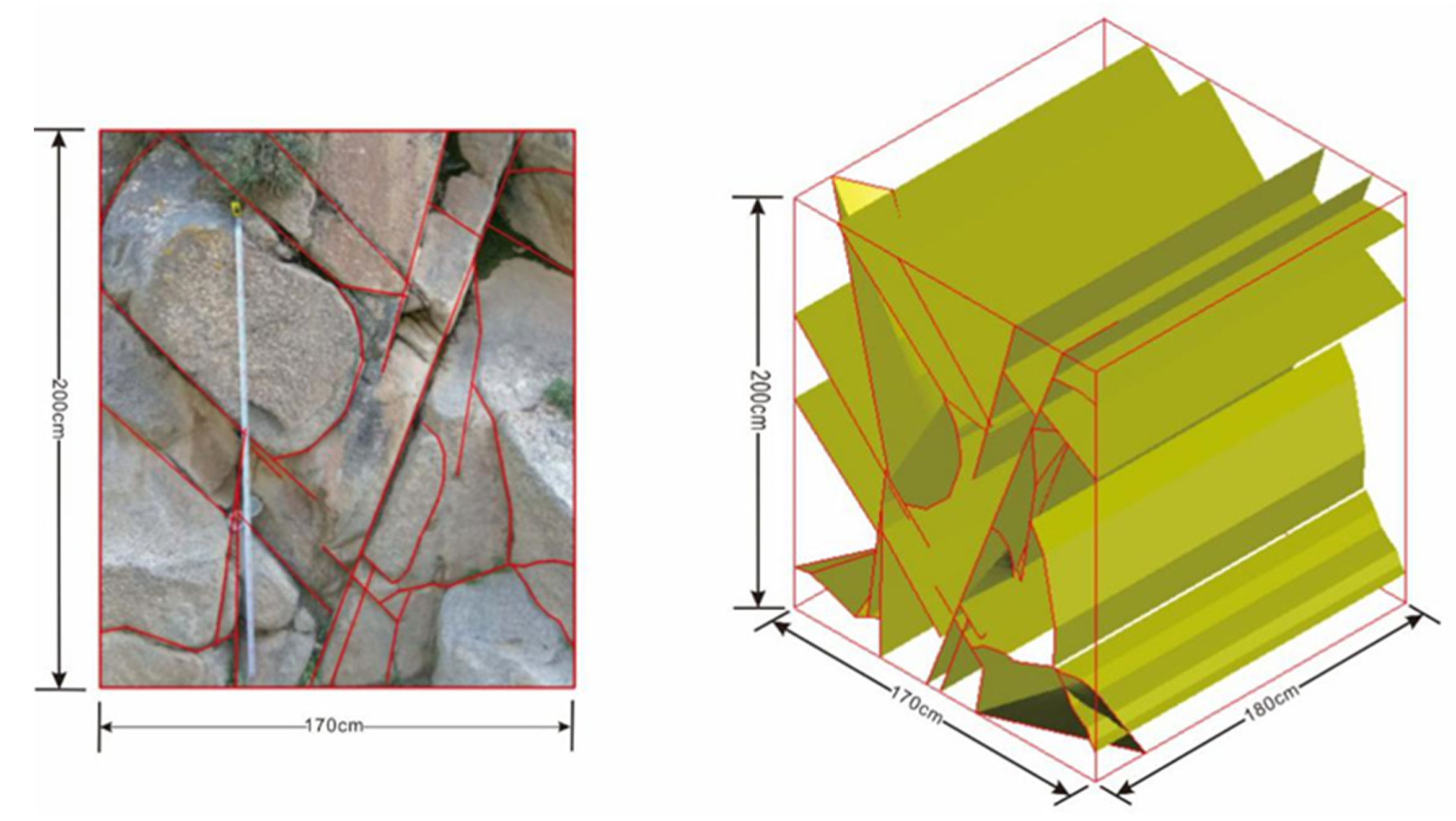
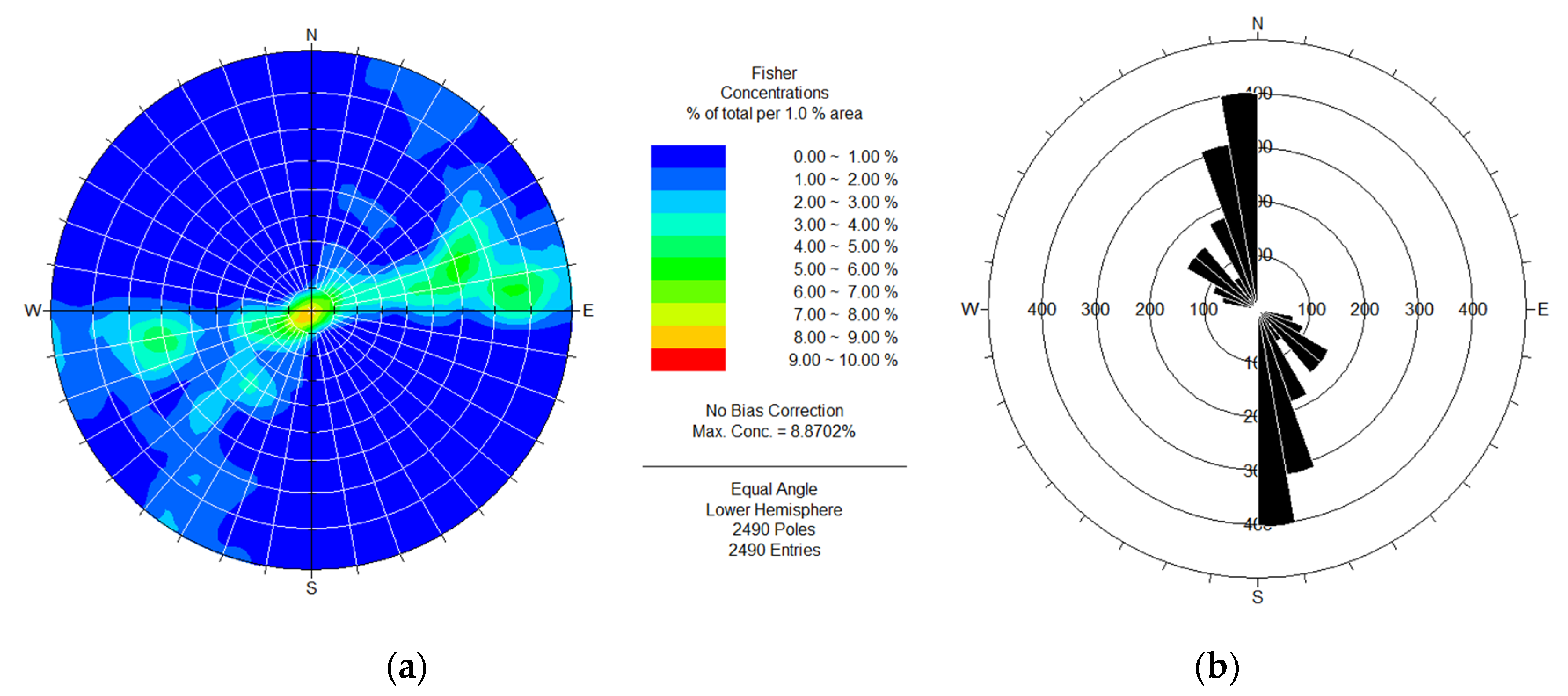



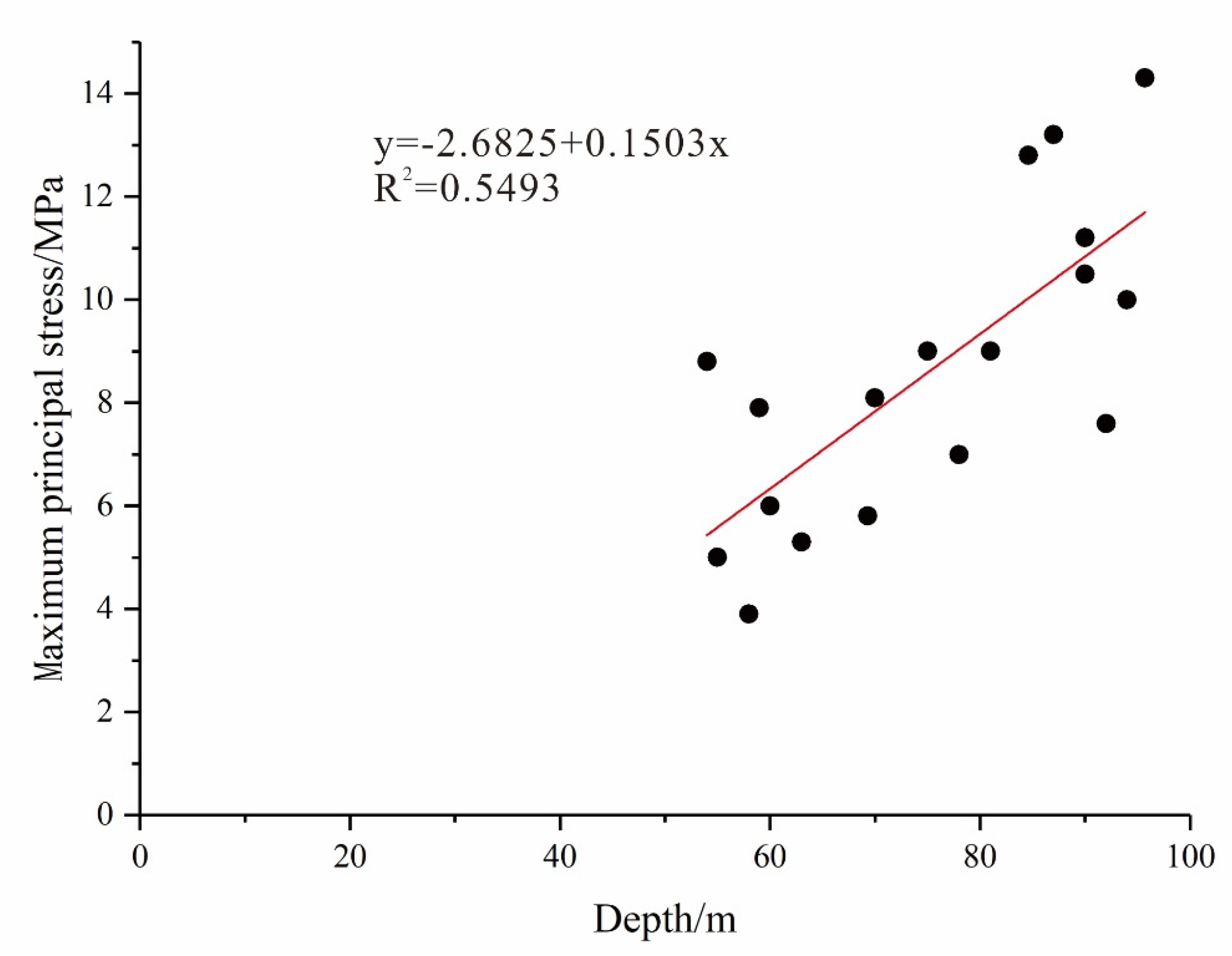
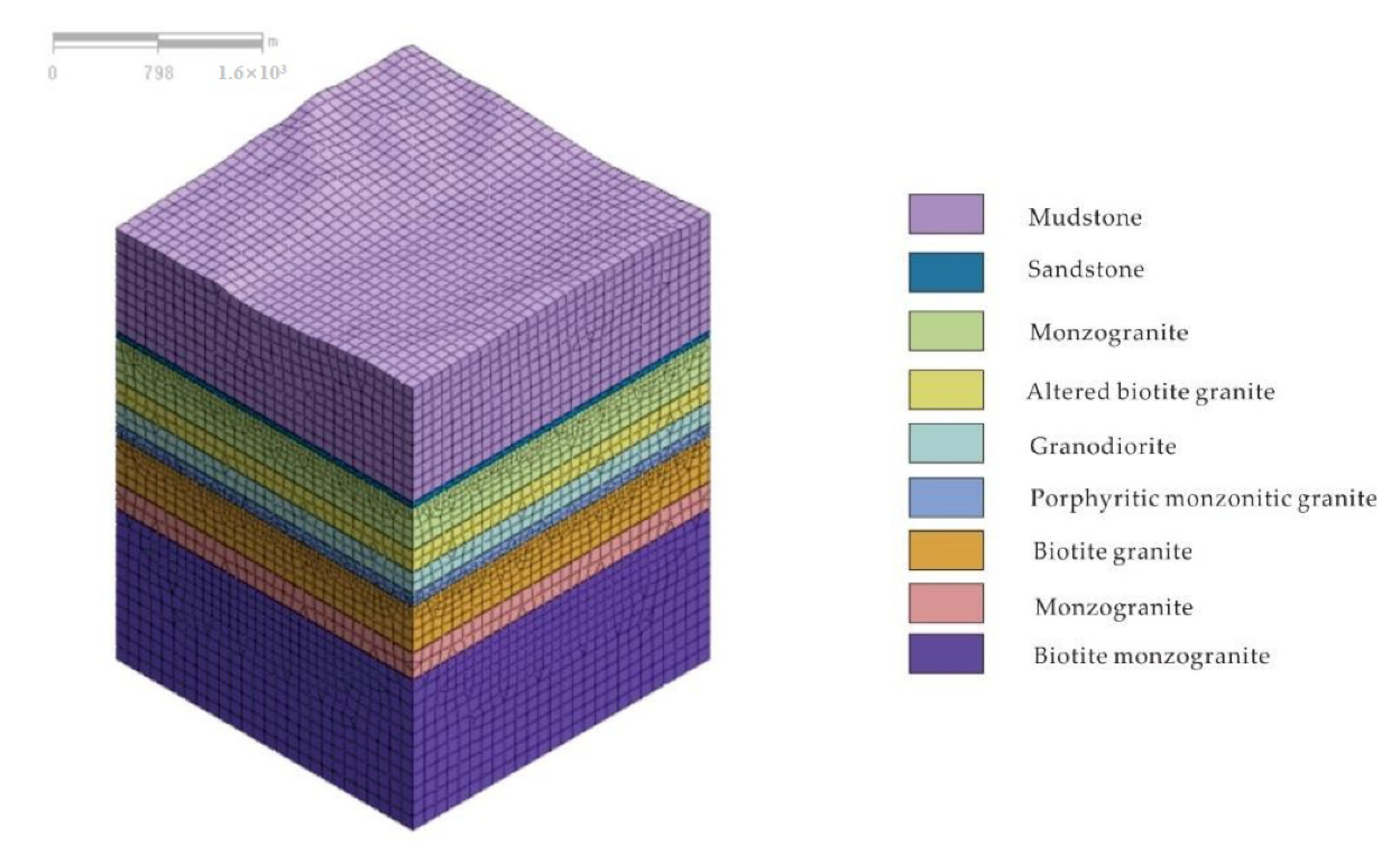
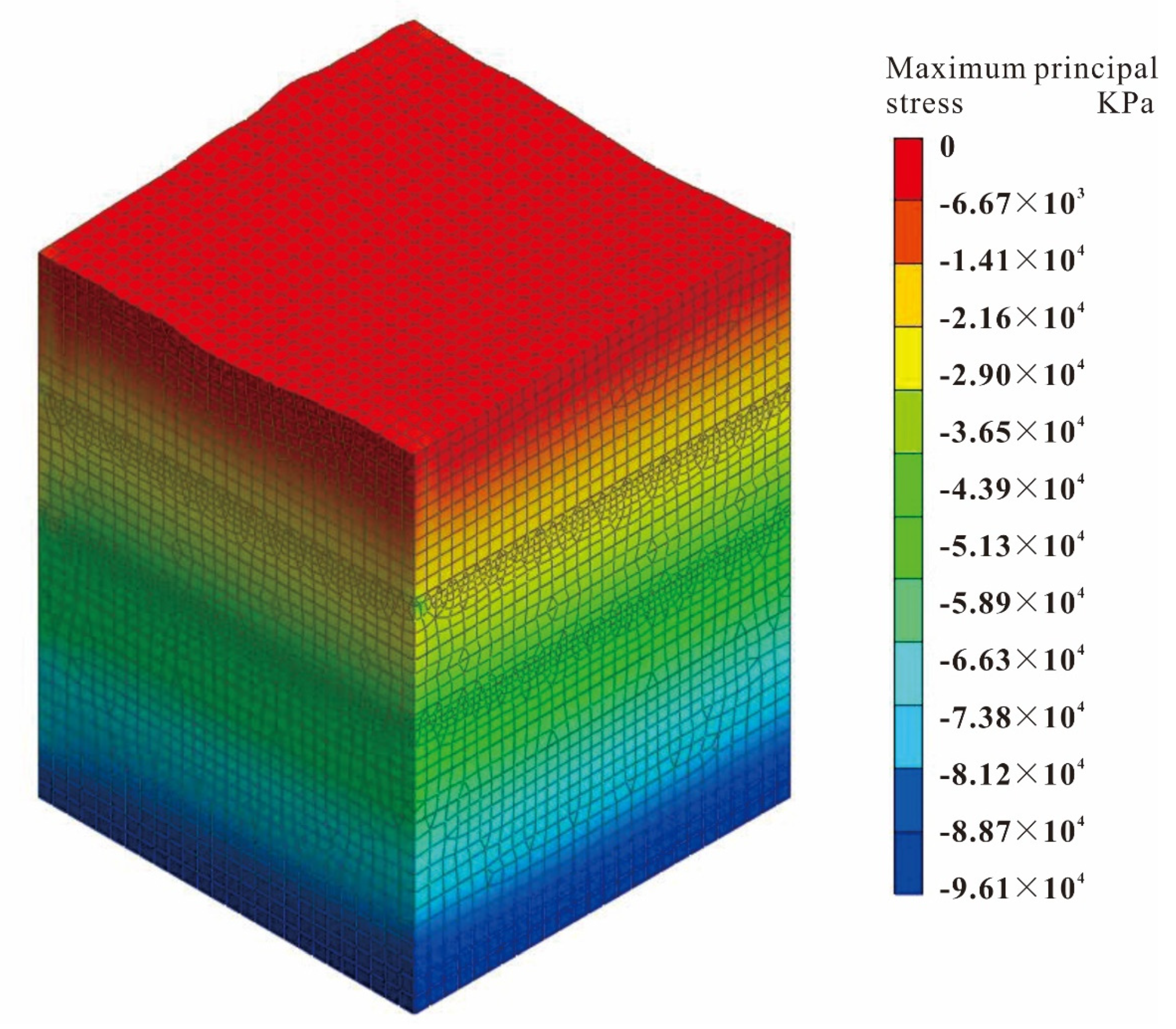



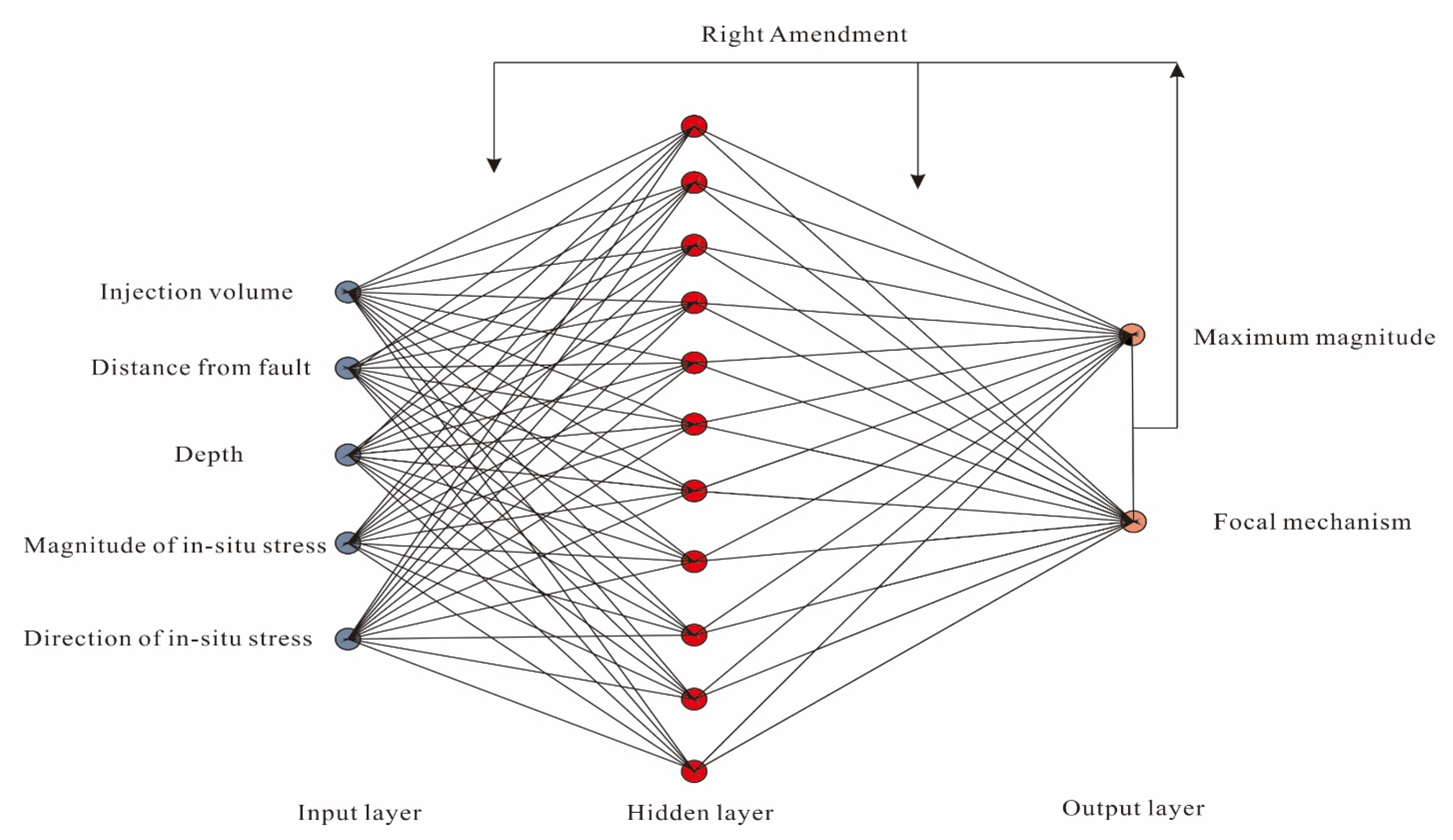

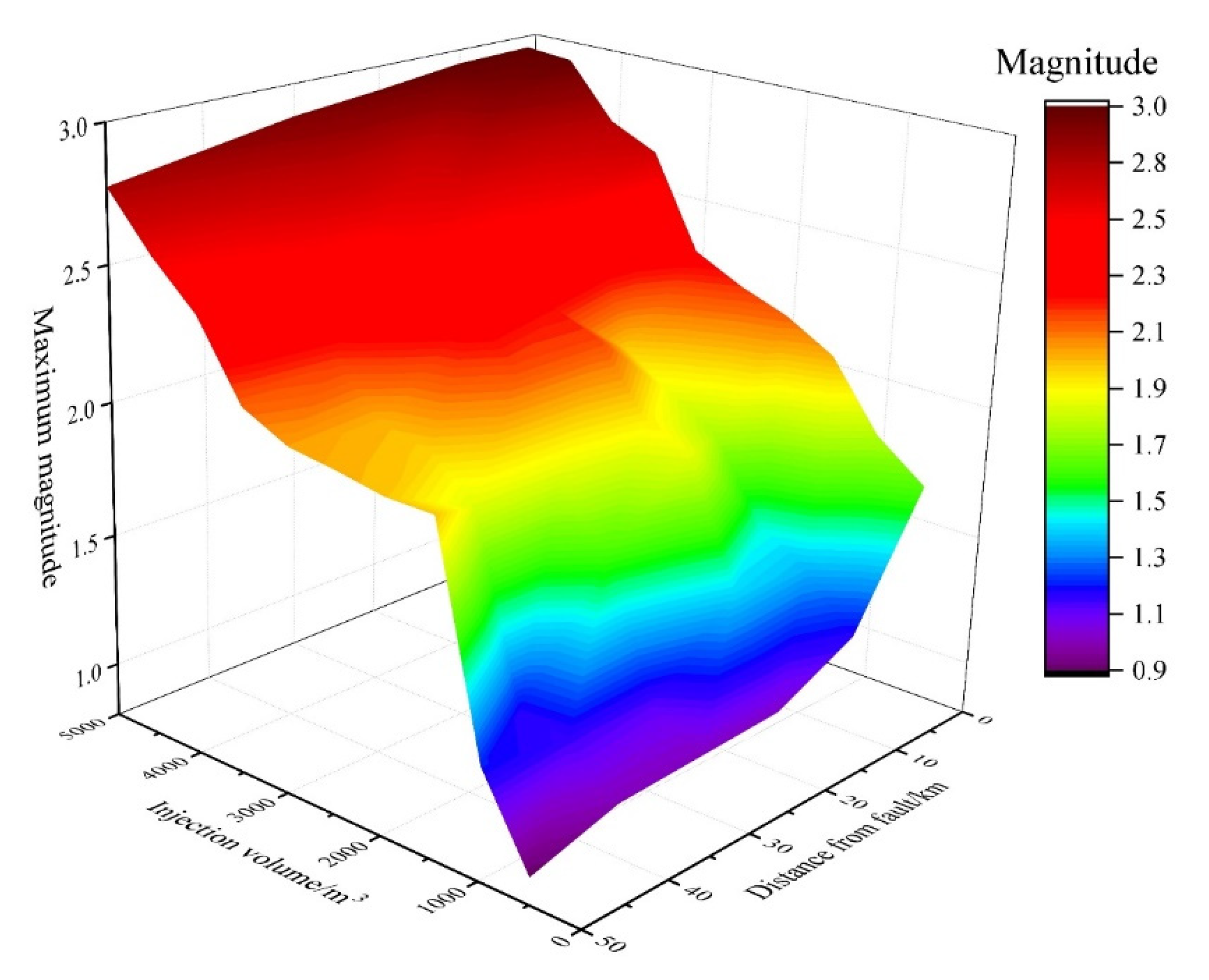

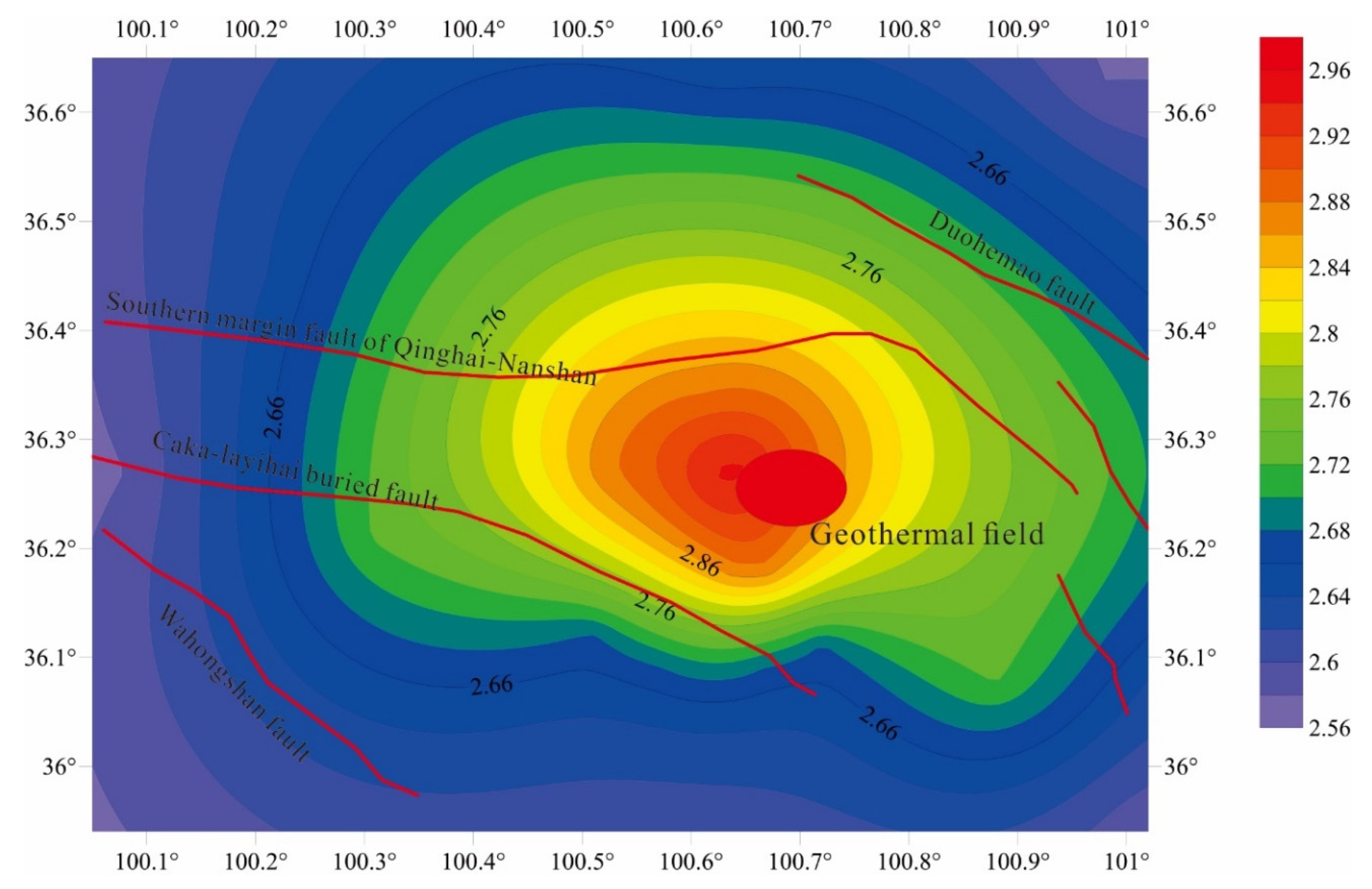
| Origin Time | 2017 1214 | 2000 0920 | 2000 0912 | 1995 0709 | 1994 1010 | 1994 0923 | 1994 0904 | 1994 0103 | 1990 0515 | 1990 0507 | 1990 0426 | 1990 0426 | 1990 0426 | |
|---|---|---|---|---|---|---|---|---|---|---|---|---|---|---|
| Focal Depth/km | 8.6 | 33 | 10 | 33 | 33 | 33 | 10.5 | 8.2 | 14 | 33 | 9.6 | 8.1 | 10 | |
| Magnitude | 5 | 5.1 | 6.1 | 5.1 | 5.1 | 5.3 | 5.2 | 5.7 | 5.3 | 5.3 | 6.3 | 6.5 | 6.3 | |
| Plane1 | Strike/° | 353 | 354 | 343 | 295 | 327 | 325 | 341 | 298 | 271 | 298 | 270 | 345 | 340 |
| Dip Angle/° | 44 | 59 | 8 | 58 | 45 | 61 | 64 | 61 | 17 | 59 | 90 | 78 | 62 | |
| Slip Angle/° | 150 | −177 | −170 | 98 | 109 | 101 | 88 | 69 | 47 | 68 | 90 | 128 | 128 | |
| Plane2 | Strike/° | 106 | 262 | 251 | 100 | 121 | 123 | 165 | 156 | 135 | 156 | 90 | 90 | 101 |
| Dip Angle/° | 70 | 87 | 80 | 33 | 48 | 31 | 26 | 35 | 78 | 37 | 0 | 40 | 46 | |
| Slip Angle/° | 50 | −31 | −10 | 77 | 72 | 71 | 94 | 123 | 102 | 122 | 90 | 19 | 41 | |
| Fault Mechanism | Dextral reverse | Dextral normal | Dextral normal | Dextral reverse | Dextral reverse | Dextral reverse | Sinistral reverse | Sinistral reverse | Sinistral reverse | Sinistral reverse | Reverse | Dextral reverse | Dextral reverse | |
| Direction of Maximum Principal Stress/° | 48.5 | 41.5 | 31 | 16.5 | 44 | 43.5 | 73.5 | 41.5 | 22.5 | 46.5 | 0 | 37.5 | 40.5 | |
| Dip angle of Maximum Principal Stress/° | 77 | 76 | 90 | 77.5 | 88.5 | 75 | 71 | 77 | 59.5 | 79 | 45 | 60 | 57 | |
| Beach Ball |  |  |  |  |  |  |  |  |  |  |  |  |  | |
| Point | Longitude | Latitude | Direction of Maximum Principal Stress | Dip Angle of Maximum Principal Stress |
|---|---|---|---|---|
| 1 | 100.41° | 36.23° | NE 85° | 80° |
| 2 | 100.46° | 36.39° | NE 60° | 76° |
| 3 | 100.58° | 36.39° | NE 62° | 87° |
| 4 | 100.68° | 36.21° | NE 73° | 85° |
| 5 | 100.90° | 36.15° | NE 75° | 73° |
| 6 | 100.83° | 36.21° | NE 70° | 86° |
| 7 | 100.85° | 36.29° | NE 72° | 75° |
| Inversion Method | Depth/km | Direction of Maximum Principal Stress | Dip Angle of Maximum Principal Stress |
|---|---|---|---|
| Focal mechanism | 8.2–33 | NE 37° | 35.9° |
| Joint fracture | 0 | NE 72° | 81.5° |
| Small faults | 0 | NE 55° | 45° |
| Lithology | Depth/m | Rock Properties | ||||
|---|---|---|---|---|---|---|
| Bulk Density/KN/m3 | Poisson’s Ratio | Elastic Modulus/GPa | Cohesion/MPa | Internal Friction Angle/° | ||
| Mudstone | 0–945 | 22,000 | 0.238 | 7.51 | 1.8 | 27 |
| Sandstone | 945–1000 | 23,650 | 0.240 | 14.85 | 6.5 | 36 |
| Monzogranite | 1000–1395 | 25,770 | 0.253 | 35.44 | 20 | 39 |
| Altered biotite granite | 1395–1600 | 25,810 | 0.255 | 42.13 | 24 | 42 |
| Granodiorite | 1600–1800 | 26,850 | 0.264 | 43.15 | 23 | 45 |
| Porphyritic monzonitic granite | 1800–1920 | 26,820 | 0.258 | 46.56 | 22 | 43 |
| Biotite granite | 1920–2350 | 27,560 | 0.274 | 40.25 | 24 | 42 |
| Monzogranite | 2350–2600 | 27,860 | 0.269 | 42.36 | 25 | 43 |
| Biotite monzogranite | 2600–4000 | 27,960 | 0.271 | 41.28 | 24 | 46 |
| Number | Injection Volume/m3 | Distance from Fault/km | Depth/km | Magnitude of In-Situ Stress/MPa | Direction of In-Situ Stress/° | Maximum Magnitude | Focal Mechanism |
|---|---|---|---|---|---|---|---|
| 1 | 0 | 185 | 8.6 | 99 | 48.5 | 5 | Dextral reverse |
| 2 | 0 | 132 | 33 | 104 | 41.5 | 5.1 | Dextral normal |
| 3 | 0 | 159 | 10 | 88 | 31 | 6.1 | Dextral normal |
| 4 | 0 | 85 | 33 | 117 | 16.5 | 5.1 | Dextral reverse |
| 5 | 0 | 80 | 33 | 115 | 44 | 5.1 | Dextral reverse |
| 6 | 0 | 83 | 33 | 82 | 43.5 | 5.3 | Dextral reverse |
| 7 | 0 | 82 | 10.5 | 100 | 73.5 | 5.2 | Sinistral reverse |
| 8 | 0 | 90 | 8.2 | 109 | 41.5 | 5.7 | Sinistral reverse |
| 9 | 0 | 81 | 14 | 110 | 22.5 | 5.3 | Sinistral reverse |
| 10 | 0 | 61 | 33 | 98 | 46.5 | 5.3 | Sinistral reverse |
| 11 | 0 | 56 | 9.6 | 116 | 0 | 6.3 | Reverse |
| 12 | 0 | 61 | 8.1 | 108 | 37.5 | 6.5 | Dextral reverse |
| 13 | 0 | 68 | 10 | 101 | 40.5 | 6.3 | Dextral reverse |
| 14 | 900 | 0.21 | 5.49 | 243 | 75 | 5.5 | Reverse |
| 15 | 20,000 | 0.34 | 4.13 | 91 | 101 | 3.7 | Unknown |
| 16 | 40,000 | 1.21 | 4.98 | 91.3 | 175 | 2.9 | Unknown |
| 17 | 200,000,000 | 0.58 | 2.5 | 72.3 | 155 | 4.4 | Dextral |
| 18 | 11,566 | 1.35 | 5 | 115 | 144 | 3.4 | Unknown |
| 19 | 13,600,000,000 | 6 | 3.39 | 98.3 | 26 | 4.6 | Dextral normal |
| 20 | 4000 | 0.47 | 9.1 | 150 | 166 | 1.2 | Unknown |
Publisher’s Note: MDPI stays neutral with regard to jurisdictional claims in published maps and institutional affiliations. |
© 2020 by the authors. Licensee MDPI, Basel, Switzerland. This article is an open access article distributed under the terms and conditions of the Creative Commons Attribution (CC BY) license (http://creativecommons.org/licenses/by/4.0/).
Share and Cite
Shan, K.; Zhang, Y.; Zheng, Y.; Li, L.; Deng, H. Risk Assessment of Fracturing Induced Earthquake in the Qiabuqia Geothermal Field, China. Energies 2020, 13, 5977. https://doi.org/10.3390/en13225977
Shan K, Zhang Y, Zheng Y, Li L, Deng H. Risk Assessment of Fracturing Induced Earthquake in the Qiabuqia Geothermal Field, China. Energies. 2020; 13(22):5977. https://doi.org/10.3390/en13225977
Chicago/Turabian StyleShan, Kun, Yanjun Zhang, Yanhao Zheng, Liangzhen Li, and Hao Deng. 2020. "Risk Assessment of Fracturing Induced Earthquake in the Qiabuqia Geothermal Field, China" Energies 13, no. 22: 5977. https://doi.org/10.3390/en13225977
APA StyleShan, K., Zhang, Y., Zheng, Y., Li, L., & Deng, H. (2020). Risk Assessment of Fracturing Induced Earthquake in the Qiabuqia Geothermal Field, China. Energies, 13(22), 5977. https://doi.org/10.3390/en13225977





